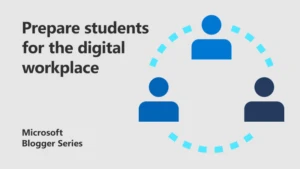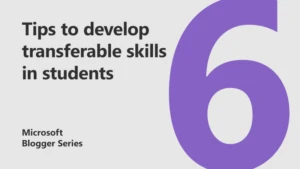
4 steps to enhance children’s education with machine learning
We’re entering a time when our children’s education is becoming a blend of remote learning and classroom-based teaching. At Talk Think Do, we’ve been working with Explore Learning to use machine learning to improve educational outcomes.
So what we can do with machine learning? We can first use it to understand an individual’s learning needs. It can then be used to improve the quality, effectiveness, and efficiency of teaching.
Using technology to disrupt education
 Teachers often understand the complexity of their student’s parent’s lives (often, they’re in the same boat!). Especially when remote learning and extra support at home can generate real pressures. But parents are always keen to help. And they now have a greater awareness than ever of the array of remote learning options available. Machine learning can help take the complexity out of giving students the extra help they need, coupled with adaptive learning.
Teachers often understand the complexity of their student’s parent’s lives (often, they’re in the same boat!). Especially when remote learning and extra support at home can generate real pressures. But parents are always keen to help. And they now have a greater awareness than ever of the array of remote learning options available. Machine learning can help take the complexity out of giving students the extra help they need, coupled with adaptive learning.
What is adaptive learning?
Adaptive learning uses software to change what is presented to a student based on their interactions. To the student, it may seem that they are being presented with content, questions, and hints that are either preordained or random. The reality is that the adaptive learning algorithms are carefully guiding their path. When adaptive learning is blended with effective teaching, students can master and retain skills 1.5 times faster.
Many have looked to build more effective systems, leveraging the power of cloud and the opportunities it gives for data processing and machine learning.
If I were a Hollywood scriptwriter, this is the point for a montage with screens full of numbers crunching away, automating the creation of an education system. Unfortunately, it is not that easy. It also, disappointingly, doesn’t involve a montage filled with techy or 80s music (I’ll let you choose that one).
Back to reality. Here are the four most important things we learnt when we implemented adaptive learning with machine learning:
1. Consider the human side of technology to keep students engaged
We all have different preferences of learning style, such as visual, auditory, reading/writing, and kinaesthetic. A teacher will recognise this and will adapt their approach for individuals as appropriate, particularly where one encounters an area of difficulty. This, however can take a lot of time away from the teacher to deliver these different styles to each student. Machine learning can automatically deliver content to suit the learning preferences for individual students, freeing up time for teachers to spend supporting their students in other ways and answering any questions they might have. It can also help with employing gamification techniques to provide a fun and interactive learning experience for students.
2. Be clear on the outcomes you want to achieve and get your data in order
 We wanted to use adaptive learning to help students master and retain skills as efficiently as possible. To help this, we gave our machine learning program a dataset of previous interactions. This enabled us to predicts future events based on that previous data.
We wanted to use adaptive learning to help students master and retain skills as efficiently as possible. To help this, we gave our machine learning program a dataset of previous interactions. This enabled us to predicts future events based on that previous data.
The more the program is used by students and the more new data it collects, the smarter your machine learning system will be as it learns to adapt and provide outcomes that are closer to what you set out to achieve at the start.
3. Determine how and when to intervene
Reinforcement is used to ensure that students continue to be exposed to skills that have been mastered until they have demonstrated a solid understanding. To achieve this, there are a number of variables adaptive learning will use. This includes the order that skills are presented, when to progress or regress skills, and when and how to intervene if a student is becoming stuck.
4. Look for opportunities to understand and optimise
 Using machine learning optimises the learning path by enabling you to use a far more complex set of variables. This could include the time taken for a student to answer a question, and the geographical location (and therefore school system and learning method taught). When given a wrong answer, machine learning can identify and reinforce the skill that was the source of the misunderstanding.
Using machine learning optimises the learning path by enabling you to use a far more complex set of variables. This could include the time taken for a student to answer a question, and the geographical location (and therefore school system and learning method taught). When given a wrong answer, machine learning can identify and reinforce the skill that was the source of the misunderstanding.
Doing this will help a student retain and learn skills quickly, as well as ensuring they are getting the right information, at the right time.
Unlock children’s learning potential
Online education tools are a great resource for parents. Machine learning, when applied intelligently to adaptive learning, has the ability to provide highly optimised support for accelerating children’s progress. However, this is not purely a numbers game. The human touch is a critical element in providing true long-term engagement and progression.
When assessing tools available, try and choose those that best support the power of adaptive learning with human intervention.
If you have an idea where you think machine learning may help and want to know more, we would love to spend the day with you discussing the art of the possible.
Find out more
Discover tools and technology for distance learning
Learn how to create and collect data through adaptive assessments
Explore more about Talk Think Do
Grow your skills and expertise at the UK Partner Skills Hub
About the author
 Matt is CEO of Talk Think Do, a UK based Microsoft Gold Partner specialising in cloud native solutions. Before Talk Think Do, Matt amassed 25 years’ experience in software development, working on high profile projects for world-renowned organisations. Employed first as a developer and then as a solutions architect, Matt’s CV includes work for Barclays, Fitness First and several Formula 1 teams.
Matt is CEO of Talk Think Do, a UK based Microsoft Gold Partner specialising in cloud native solutions. Before Talk Think Do, Matt amassed 25 years’ experience in software development, working on high profile projects for world-renowned organisations. Employed first as a developer and then as a solutions architect, Matt’s CV includes work for Barclays, Fitness First and several Formula 1 teams.
Today, his focus is on the direction of Talk Think Do, growing the business by developing strategic partnerships and building the technical capability of the team.




